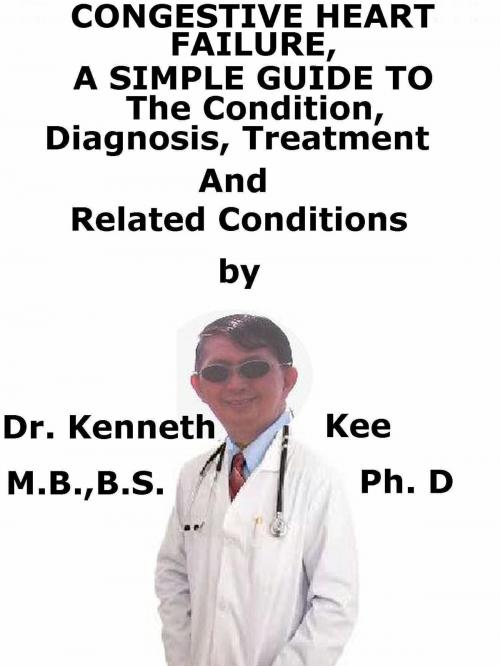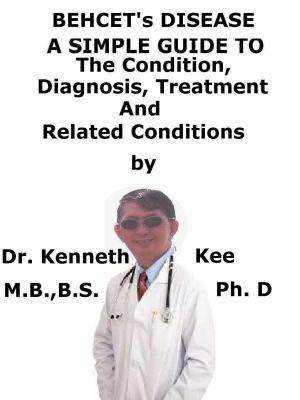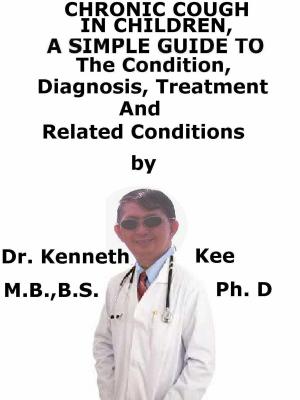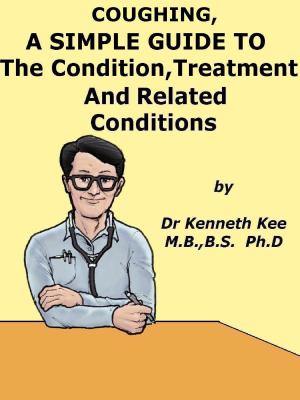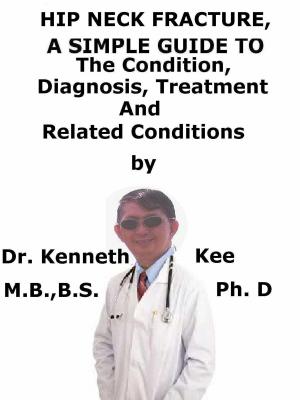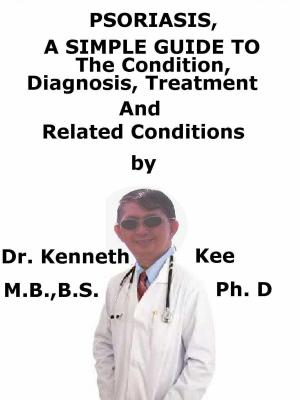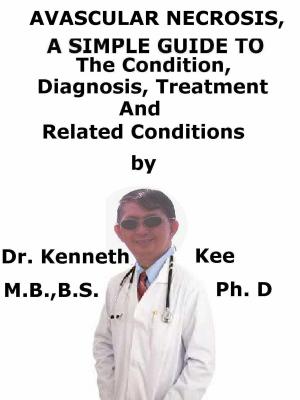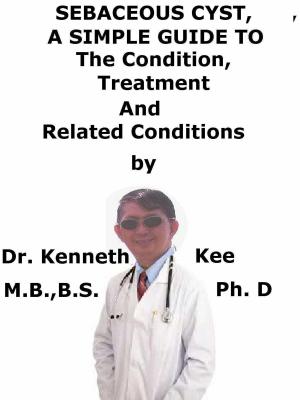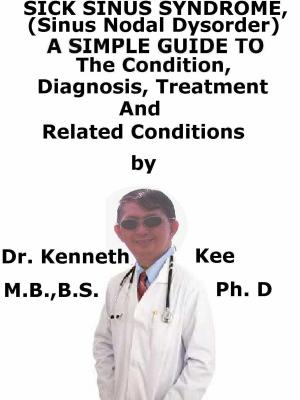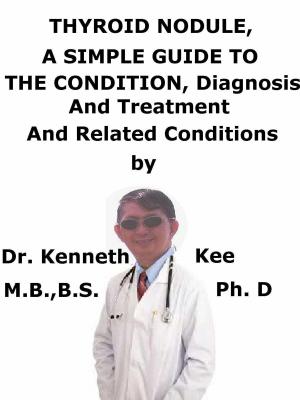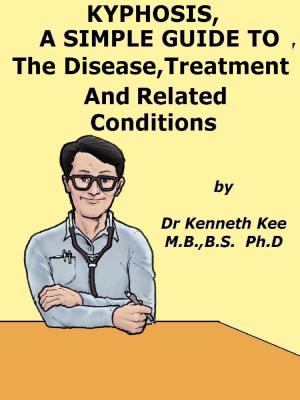Congestive Heart Failure, A Simple Guide To The Condition, Diagnosis, Treatment And Related Conditions
Nonfiction, Health & Well Being, Medical, Specialties, Internal Medicine, Cardiology, Health, Ailments & Diseases, Heart| Author: | Kenneth Kee | ISBN: | 9781370859429 |
| Publisher: | Kenneth Kee | Publication: | November 22, 2016 |
| Imprint: | Smashwords Edition | Language: | English |
| Author: | Kenneth Kee |
| ISBN: | 9781370859429 |
| Publisher: | Kenneth Kee |
| Publication: | November 22, 2016 |
| Imprint: | Smashwords Edition |
| Language: | English |
Heart failure happens when the heart muscle cannot push or eject the blood out of the heart
This is termed systolic heart failure.
The heart muscles are stiff and can not fill up with blood readily.
This is termed diastolic heart failure.
When the heart's pumping becomes less effective, blood may accumulate in other parts of the body.
Fluid may collect in the lungs, liver, gastrointestinal tract, and the arms and legs.
This is termed congestive heart failure.
Causes of Congestive Heart failure are:
1. Coronary artery disease (CAD)
2. Cardiomyopathy
3. Congenital heart disease
4. High blood pressure
5. Heart valve disease
6. Infection that weakens the heart muscle and its pumping action
7. Abnormal heart rhythms
Diagnosis is by :
a. Fast or difficult breathing
b. Leg swelling (edema)
c. Neck veins that are distended
d. Sounds (crepitations) from fluid buildup in your lungs, heard through a stethoscope
e. Swelling of the liver or abdomen
f. Uneven or fast heartbeat and abnormal heart sounds
An echocardiogram (ultrasound) is the best test to diagnose, determine the cause of, and monitor the heart failure because it can check on the blood flow through the heart.
The purposes of heart treatment are to:
1. Relieve symptoms and improve quality of life
2. Slow disease progression
3. Reduce the need for emergency room visits and hospitalization
4. Help people live longer
Treatment methods are dependent on the form, cause, symptoms and category of the heart failure.
Normally more than one treatment is given.
Get sufficient rest
Take a heart-healthy diet that is low in sodium and fat
Do not smoke and drink
The forms of medicine given are:
1. Angiotensive converting enzyme (ACE) inhibitors, which dilate, or widen, the arteries, increasing blood flow and making it so that the heart does not have to pump as hard.
2. Beta-blockers reduce blood pressure and decrease and block the effect of harmful hormones that can induce disease progression.
3. Diuretics or water pills help the kidneys produce more urine and excrete the body of excess fluid which can over load the heart.
4. Spironolactone is a diuretic that preserves potassium and has been found to reduce hospitalization and prolong life when given to treat advanced heart failure.
5. Potassium and magnesium supplements are often given with diuretics to replace these minerals, which are passed out in urine.
6. Digoxin makes the heart beat stronger and slower, and controls the rhythm of its contractions.
8. Anti-arrhythmic drugs can treat abnormal heart rhythms
Surgical methods to treat underlying causes of heart failure are:
1. Coronary artery bypass graft (CABG) or angioplasty to treat and prevent heart failure caused by blocked arteries.
2. Angioplasty
3. Implantation of pacemakers
4. Heart Transplantation as last resort
TABLE OF CONTENT
Introduction
Chapter 1 Congestive Heart failure
Chapter 2 Causes
Chapter 3 Symptoms
Chapter 4 Diagnosis
Chapter 5 Treatment
Chapter 6 Prognosis
Chapter 7 Coronary Heart Disease
Chapter 8 Hypertension
Epilogue
Heart failure happens when the heart muscle cannot push or eject the blood out of the heart
This is termed systolic heart failure.
The heart muscles are stiff and can not fill up with blood readily.
This is termed diastolic heart failure.
When the heart's pumping becomes less effective, blood may accumulate in other parts of the body.
Fluid may collect in the lungs, liver, gastrointestinal tract, and the arms and legs.
This is termed congestive heart failure.
Causes of Congestive Heart failure are:
1. Coronary artery disease (CAD)
2. Cardiomyopathy
3. Congenital heart disease
4. High blood pressure
5. Heart valve disease
6. Infection that weakens the heart muscle and its pumping action
7. Abnormal heart rhythms
Diagnosis is by :
a. Fast or difficult breathing
b. Leg swelling (edema)
c. Neck veins that are distended
d. Sounds (crepitations) from fluid buildup in your lungs, heard through a stethoscope
e. Swelling of the liver or abdomen
f. Uneven or fast heartbeat and abnormal heart sounds
An echocardiogram (ultrasound) is the best test to diagnose, determine the cause of, and monitor the heart failure because it can check on the blood flow through the heart.
The purposes of heart treatment are to:
1. Relieve symptoms and improve quality of life
2. Slow disease progression
3. Reduce the need for emergency room visits and hospitalization
4. Help people live longer
Treatment methods are dependent on the form, cause, symptoms and category of the heart failure.
Normally more than one treatment is given.
Get sufficient rest
Take a heart-healthy diet that is low in sodium and fat
Do not smoke and drink
The forms of medicine given are:
1. Angiotensive converting enzyme (ACE) inhibitors, which dilate, or widen, the arteries, increasing blood flow and making it so that the heart does not have to pump as hard.
2. Beta-blockers reduce blood pressure and decrease and block the effect of harmful hormones that can induce disease progression.
3. Diuretics or water pills help the kidneys produce more urine and excrete the body of excess fluid which can over load the heart.
4. Spironolactone is a diuretic that preserves potassium and has been found to reduce hospitalization and prolong life when given to treat advanced heart failure.
5. Potassium and magnesium supplements are often given with diuretics to replace these minerals, which are passed out in urine.
6. Digoxin makes the heart beat stronger and slower, and controls the rhythm of its contractions.
8. Anti-arrhythmic drugs can treat abnormal heart rhythms
Surgical methods to treat underlying causes of heart failure are:
1. Coronary artery bypass graft (CABG) or angioplasty to treat and prevent heart failure caused by blocked arteries.
2. Angioplasty
3. Implantation of pacemakers
4. Heart Transplantation as last resort
TABLE OF CONTENT
Introduction
Chapter 1 Congestive Heart failure
Chapter 2 Causes
Chapter 3 Symptoms
Chapter 4 Diagnosis
Chapter 5 Treatment
Chapter 6 Prognosis
Chapter 7 Coronary Heart Disease
Chapter 8 Hypertension
Epilogue
